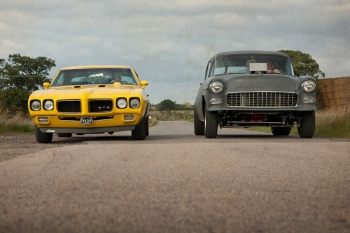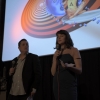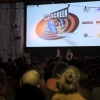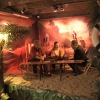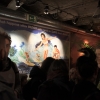ROAD RUNNERS (PART 2) | Offscreen
Ford Mustang, Chevrolet Camaro, Pontiac Trans-Am, Dodge Challenger, Plymouth Roadrunner, Ford Gran Torino, Lincoln Continental Mark III... all fast and/or significantly sized American cars – also known as muscle cars – that race along the interstate highways and dirt roads through the vast landscapes of the United States. These cars became iconic due to their use in road movies that prominently appeared on the billboards of many drive-in cinemas starting in the late 1960s.
The emergence of the road movie remains strongly associated with American cinema and the increasing use of cars in the second half of the 20th century. In the 1970s, it grew into an important film genre, displacing the traditional western which lost popularity, though it shared the frontier mythos. This mythos is embedded in the historical expansion from the East to the Wild West of the continent, to a place on the edge of civilization, an open land with unlimited possibilities. The road movie often has a metaphysical angle, exploring themes like rebellion, escape, (self) discovery, and transformation, which resonated well with the counterculture generation of that era. The protagonists are usually men (individually or as a duo, the so-called buddies) rebelling against conservative social norms, with the two main storylines being the quest or journey of discovery and the outlaw chase and race.
In Monte Hellman's timeless road epic Two-Lane Blacktop, The Driver (singer-songwriter James Taylor) and The Mechanic (Dennis Wilson of The Beach Boys), as they drive east on Route 66 in their souped-up 1955 Chevy, begin a rival race with the brash and boastful owner of a luxurious Grand Touring sports car (an incomparable Warren Oates) while competing for the affection of a female hitchhiker (Laurie Bird) who joins them on their journey. Hellman returns to the essence of the road movie and captures the endless expanse of the landscape with a stripped-down and abstract widescreen vision, presenting it as a purgatory of boredom and displacement in a nation questioning its identity in the Vietnam era.
In a very different tone is The Gumball Rally from 1976, the godfather of the short-lived cycle of (often comedic) “illegal cross-country car race” films, which includes the massive Burt Reynolds hit Smokey and the Bandit, Roger Corman's Death Race 2000, and The Cannonball Run. The introduction of a national speed limit of 55 mph by the American government in the mid-1970s, and the predictable outrage that the rule was an infringement on individual rights, was a goldmine for exploitation filmmakers and Hollywood studios. Director Chuck Bail, a former stuntman and coordinator of many classic film stunts, fills his B-movie The Gumball Rally with dangerously real and spectacular action scenes and (near) car crashes, along with colorful one-dimensional characters (played by the likes of Raul Julia, Michael Sarrazin, and Gary Busey). He possesses a good sense of slapstick comedy timing, making the result feel like a delightfully silly and enjoyable live-action Looney Tunes cartoon.
THE GUMBALL RALLY
An eclectic group of eccentrics with an exotic fleet of personalized and tuned cars gather in New York for an illegal, no-rules race of 2,900 miles to Long Beach, California. The main prize: the exclusive stoefer rights and a fully loaded gumball machine.
TWO-LANE BLACKTOP
While drag racing through the American Southwest in a Chevrolet 150, a stoic duo of driver and mechanic cross paths with a hitchhiking hippie and the brazen driver of a shiny GTO sports car. Melancholic road movie and cult classic.



